Bogs don’t look very interesting. They are green and blackish-brown, wet and squelchy. If you are wearing sandals or light trainers, your socks are soon wet and your shoes muddy. I have had to retrieve several of my Wellington boots, from big Dartmoor bogs that had sucked the boot off my feet. Even a good pair of walking boots is not fully bog-proof. After heavy rain the peaty water can seep over the tops of your boots and trickle down to your toes.
But bogs are fascinating and, at this time of the year, blessed with beautiful flowers. All around and over Dartmoor there are boggy patches. One of my favourite bogs is very small but accessible and home to most of the bogland flowers.
I first found this little bog, while preparing a project on the Avon valley, from Dartmoor to the sea, for the children at Charleton School in 1972. We parked in the car park at Shipley Bridge and walked up to the Avon Dam, where at that time it was possible to book a guided tour around and through the dam.
Barbara and I had taken our toddlers, Robert and Clare, with us to recce the route. We have been in love with that walk along the road up from Shipley Bridge towards the Avon Reservoir ever since. In little more than a hundred yards from the car park and the sometimes spectacular waterfall, we found the bog. It is on the left of the road, almost hidden by bracken in mid-summer. As you can see from the photograph, at first sight it does not look of any interest. But look closer. Be careful not to tread on any of its treasures.
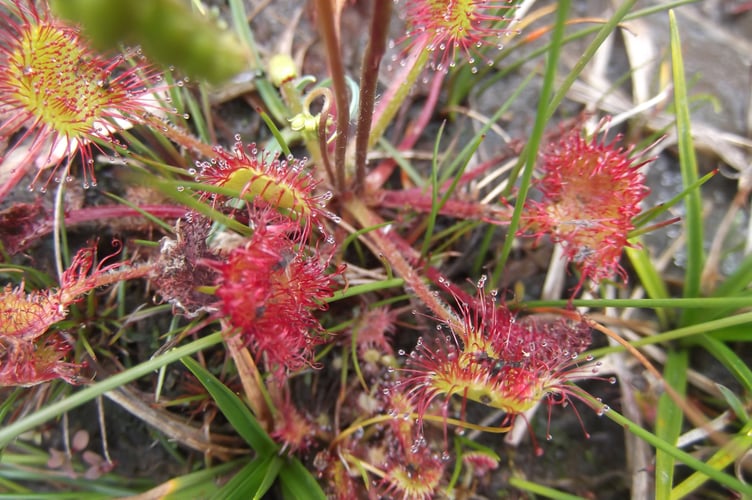
The green foliage is a mixture of grasses, sedges, often with curled, silvery leaves, rushes and broad-leaved bog pondweed. The bright pink heather, in the photo, is cross-leaved heath (Erica tetralix). This is a bog specialist, growing in wetter parts than the bright, red-purple bell heather (Erica cineria) or the tall spikes of small, whitish-purple flowers of ling heather. (Calluna vulgaris). Cross-leaved heath has the largest flowers of any of the three common heathers.
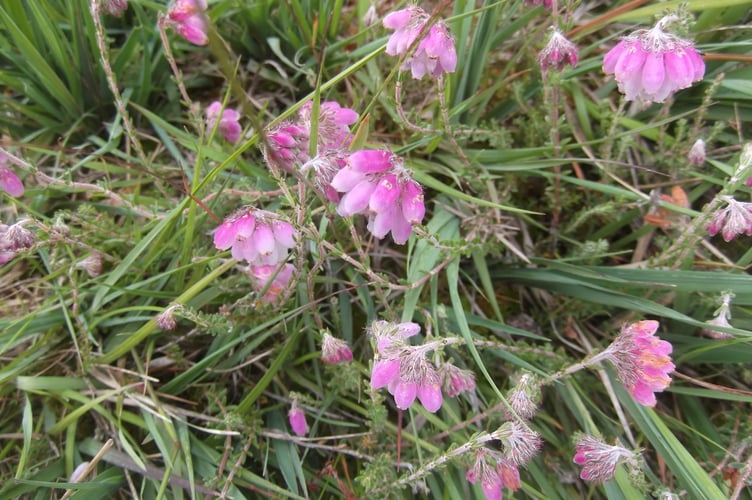
My favourite bog flower is bog asphodel (Narthecium ossifragum). It is at its best in July; I wish it lasted longer. The flowers, as you can see in the photo, are deep yellow; the anthers, holding the pollen, are like orange stars. The leaves are flattened and curved, similar to some sedges, and they make bog asphodel recognisable in the bogs all the year round.
A spread of bog asphodel flower spikes is a sure sign of a bog ahead. Its scientific name, - ossifragum, means ‘bone-breaker’. If sheep or cattle wander into a bog and get stuck they can break their legs in their struggles to get out.
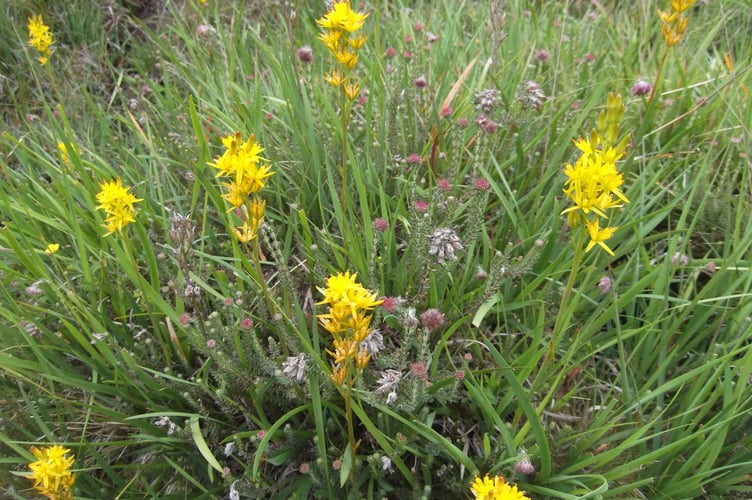
The bog plant which especially fascinates many children is the round-leaved sundew (Drosera rotundifolia). There are lots of these in our bog. At the top of their stems, about ten centimetres tall, they have insignificant white flowers. It is not the tiny flowers that interest the children but the leaves. The rosettes of round leaves at the base of the plant have many sticky, red hairs. When insects, from as small as a midge to as big as a damsel-fly, land on the leaves to investigate they find they are stuck. At the end of each red hair is a drop of sticky fluid, a digestive juice. These curl over to trap the insect and help the sundew recycle the insect for its all-day breakfast.
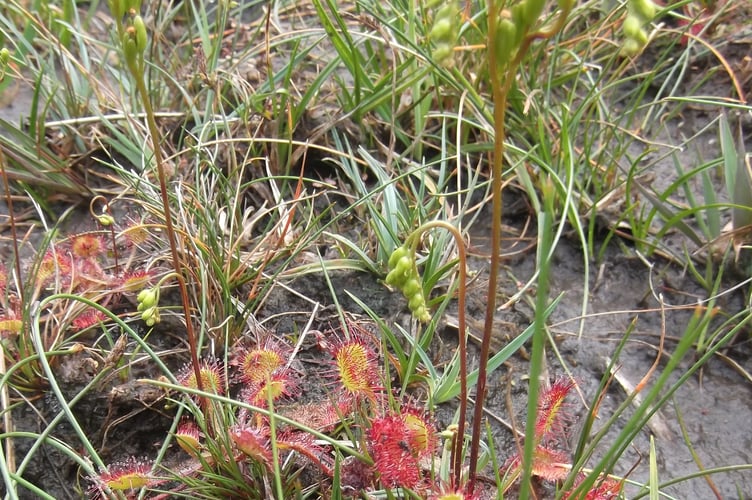
Finally we come to an inconspicuous rarity. It is another insectivorous plant but difficult to find. It is one of those plants that only grow on the coastal fringe of Western Europe. This group includes many very different unrelated species but together botanists call them part of the ‘Lusitanian flora’. Our rarity is called pale butterwort (Pinguicula lusitanica). It is often less than ten centimetres high with a single, very pale pink flower at the end of the slender stem. At the base is a rosette of a few, small, fleshy leaves. They are pale greyish-green, not easy to spot, with an edge that can curl over to engulf any small insect.
Wherever you find your bog, I hope you enjoy exploring its treasures, including some bog asphodel. May you avoid being eaten by a mutant giant sundew or losing a Wellington boot.
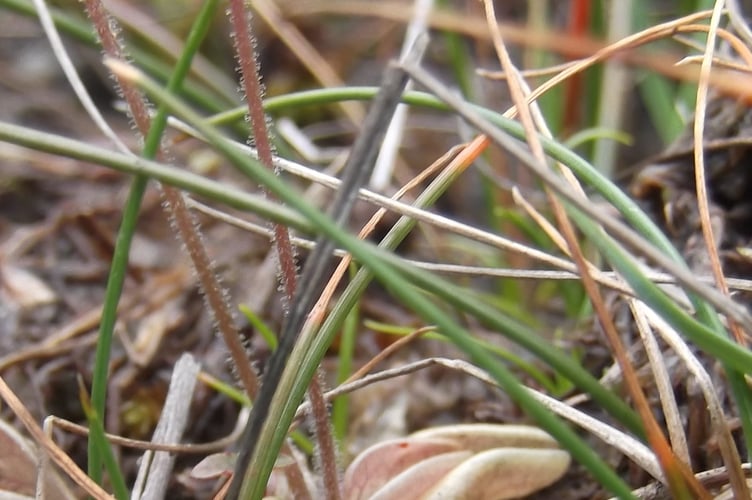





Comments
This article has no comments yet. Be the first to leave a comment.